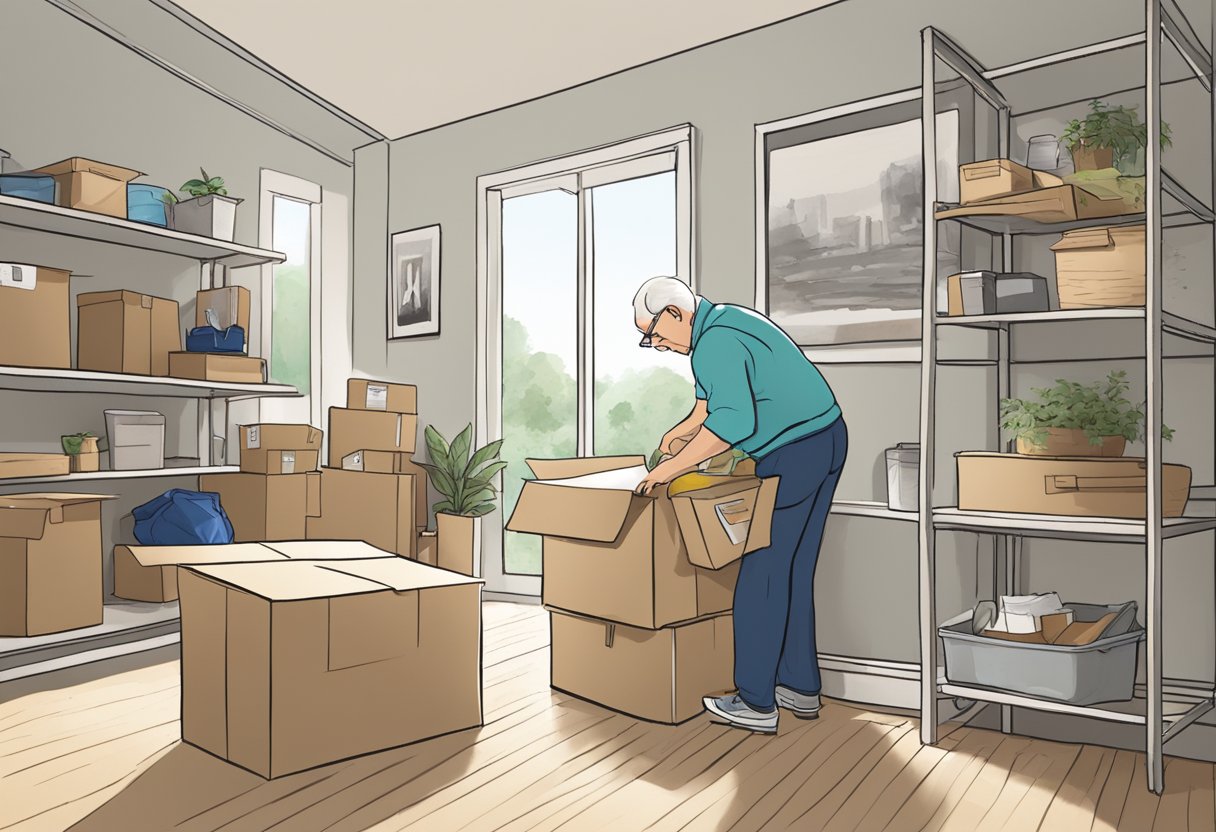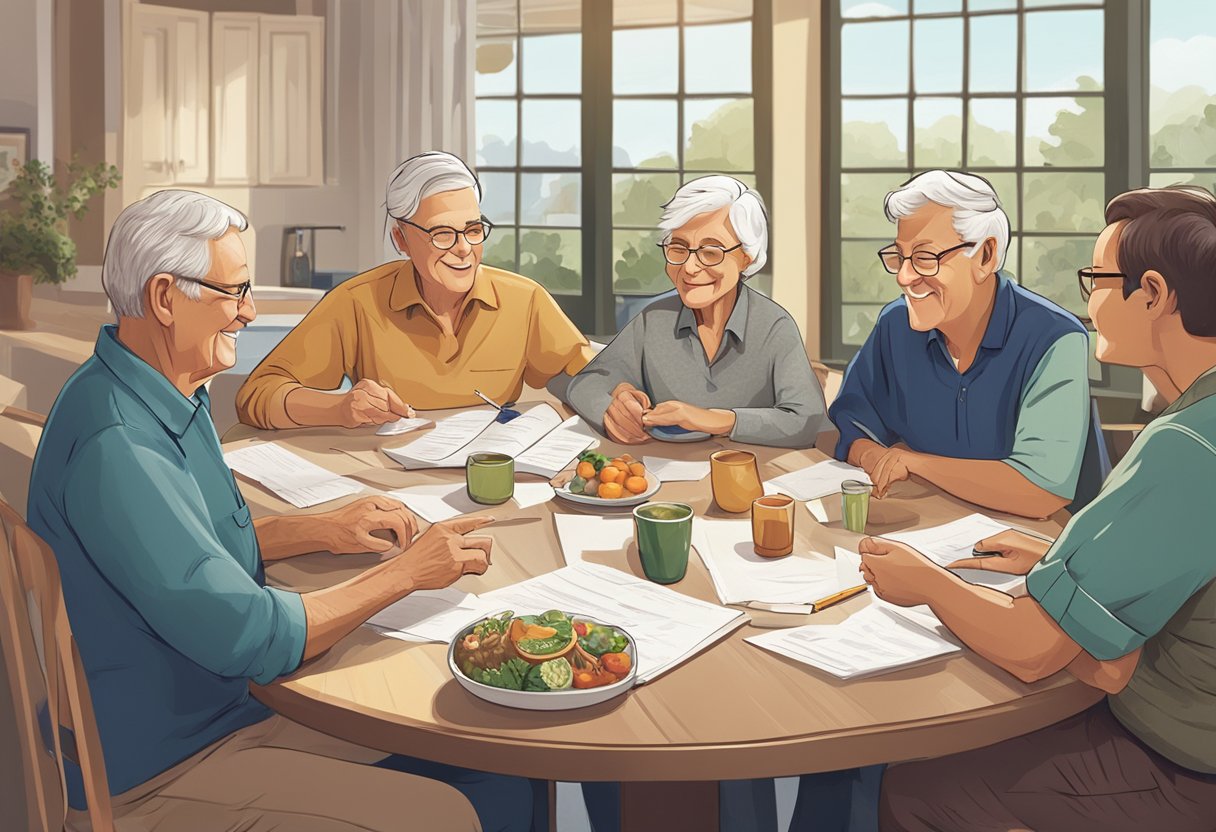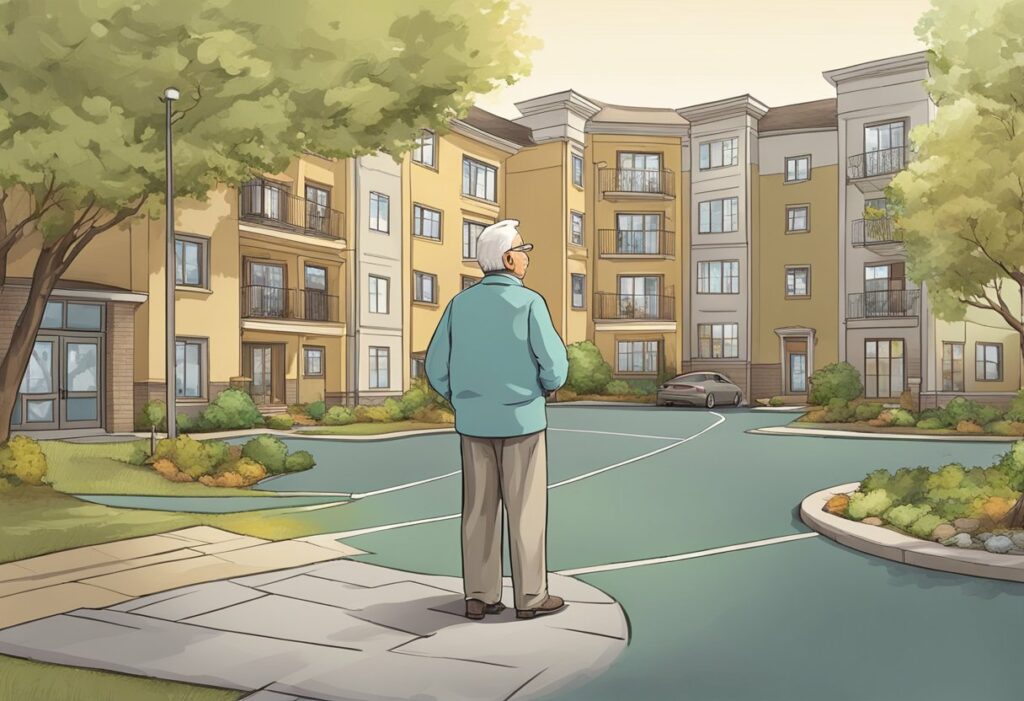Understanding your senior living options is crucial to making an informed decision regarding your future home. Factors such as safety, accessibility, and convenience should be considered when evaluating different living arrangements. Moreover, planning for potential challenges and seeking assistance from professionals, such as senior move managers, can help ensure a smooth transition into your golden years.
The process of moving in later life extends beyond just settling in a new home; it also involves financial, legal, and emotional aspects. Adjusting to a new environment, managing paperwork, and staying connected with family and friends are essential to the success of your move. With the right resources and support, moving as a senior can be a transformative experience that paves the way to a comfortable and fulfilling lifestyle.
Key Takeaways
- Consider factors such as safety, accessibility, and convenience when evaluating senior living options.
- Seek assistance from professionals like senior move managers to navigate the challenges of moving.
- Manage financial, legal, and emotional aspects of the move to ensure a smooth transition into your new environment.
Understanding Senior Living Options
As you or your loved one is aging, it’s essential to understand the various senior living options available to make an informed decision. Let’s explore some common choices for older adults to help you find the best fit for your needs and preferences.
Independent Living Communities cater to seniors who are still capable of living on their own but desire the convenience and socialization that comes with living in a community setting. These communities often offer various amenities, such as fitness centers, dining facilities, and group activities to enhance residents’ lives. You can learn more about independent living options in this HelpGuide article.
Assisted Living Communities are designed to support seniors who need assistance with daily activities, including personal care, transportation, and medication management. These communities provide a balance of independence and tailored care services within a comfortable living environment. For more details, take a look at Forbes’ article on transitioning to senior living.
Memory Care units specialize in caring for older adults with Alzheimer’s disease or other forms of dementia. These facilities offer tailored programs and care services designed to help residents maintain cognitive health and overall well-being.
Nursing Homes are a long-term care option for seniors who require ongoing medical care and assistance with daily living activities. These facilities usually provide round-the-clock medical care delivered by licensed professionals, in addition to a comfortable living environment and social activities.
In addition to the above options, here are a few other types of senior living:
- Continuing Care Retirement Communities (CCRC): These communities offer multiple levels of care, allowing residents to transition seamlessly between independent living, assisted living, and nursing care as needed.
- Home Care: This option allows seniors to receive care and assistance while living in their own homes. Services can range from personal care and housekeeping to medical care provided by a licensed professional.
- Senior Co-Housing: Like-minded seniors may choose to live together in a shared-living arrangement, which can provide companionship, financial benefits, and mutual support.
When considering the best option for you or your loved one, take into account factors such as the level of care required, budget, social preferences, and other important aspects of well-being. Explore the different senior living options and their associated amenities to ensure a comfortable and fulfilling retirement.
The Challenge of Moving in Later Life
Moving in later life can be a daunting task for many older adults. The decision to downsize or move to a new living space involves careful consideration of various factors such as safety, comfort, proximity to family members, and access to healthcare facilities. As you embark on this transition, be prepared to face some challenges unique to your age group.
One primary concern when moving as a senior is handling the downsizing process. This often involves going through years of accumulated clutter and deciding what to keep, donate, or discard. You may need to enlist the help of family members to sort through belongings and pack them in labeled boxes for easier unpacking later on.
Physical limitations may also pose a challenge during the move. Lifting heavy furniture, disassembling various household items, and managing the packing process can be strenuous and potentially dangerous for older adults. Be mindful of your own physical abilities, and consider hiring a specialized moving company that caters to the needs of seniors.
Moving can be particularly overwhelming for seniors with cognitive issues such as dementia. Abrupt changes in the living environment may exacerbate confusion and disorientation. It is crucial to involve elderly persons with memory loss in the decision-making process, providing them with time to adjust and familiarize themselves with their new home.
Lastly, moving can be an emotionally challenging time, as it often means leaving behind familiar surroundings, neighbors, and friends. The transition can trigger a condition called relocation stress syndrome, marked by anxiety, depression, and feelings of loss. It is important to stay connected with your support network during this period and allow yourself time to adapt to your new living situation.
By acknowledging and addressing these potential challenges, you can make the moving process smoother and more manageable. It is crucial to maintain open communication with your family and support system, and to seek professional assistance when needed, for a successful transition.
The Role of Senior Move Managers
When it comes to relocating as a senior, it can be an overwhelming and emotional process. This is where a senior move manager can make all the difference. These professionals specialize in assisting older adults with the physical and emotional aspects of moving. They provide invaluable support to make the transition to a new living space smooth and stress-free.
Senior move managers often have backgrounds in fields like gerontology, social work, healthcare, nursing, psychology, or project management. They are equipped to handle both the practical and emotional sides of the moving process for seniors. Based on their skill set, you can count on them to have a comprehensive understanding of your needs.
These experts offer a range of services that include, but are not limited to:
- Assessing your living space needs
- Helping with downsizing and decluttering
- Planning and coordinating the move
- Assisting with interior design for the new home
- Coordinating with moving companies
- Assisting with estate sales or donations
- Providing post-move support
Senior move managers can tailor their services to your specific needs, meaning you can feel confident knowing the extent of assistance is in your control. Whether you prefer them to handle the entire process or just specific tasks, they’ll be there to support you.
Furthermore, senior move managers have a holistic approach to the moving process, ensuring your emotional well-being is also taken care of. They understand the challenges faced by seniors during the transition and provide support, advocacy, and guidance throughout the move.
Ultimately, the role of a senior move manager is to ensure that your move is as seamless and stress-free as possible. By entrusting these professionals with your unique needs and preferences, you can be confident that you’re making the best decision for your future living space.
Planning the Move
As you begin the process of moving as a senior, it’s important to create a comprehensive plan to ensure a smooth transition to your new home. Start by creating a moving checklist that covers all the steps involved in the relocation process. This will help you stay organized and ensure you don’t miss any essential tasks.
When choosing a new home, consider any modifications that may be necessary to accommodate your needs. This may include installing grab bars, widening doorways, or investing in a stairlift. As you plan your move, be sure to manage all your paperwork efficiently, which includes updating your address, transferring utilities, and managing your medical records.
Hiring professional movers can make the process easier for you, as they specialize in moves for seniors and are familiar with the unique considerations involved. Be sure to schedule your moving date well in advance, giving yourself ample time to organize and pack your belongings.
One important aspect to consider while planning your move is the layout of your new living space. Obtaining the floor plans of the new space can immensely help with planning the placement of your furniture. By visualizing the layout, you can make decisions on what items you want to keep and which items should be donated, sold, or discarded.
Here’s a brief checklist to keep track of your moving tasks:
- Obtain floor plans of your new home
- Manage necessary paperwork (address updates, utility transfers, etc.)
- Organize and transfer medical records
- Make any necessary modifications to your new home
- Schedule the moving date with a professional moving company
- Begin packing and downsizing belongings
By taking a systematic approach to planning your move, you’ll be better prepared for a successful transition to your new living space and enjoy your new home sooner.
Sorting, Packing and Unpacking

When moving as a senior, one of the most important aspects is sorting, packing, and unpacking your belongings. First, consider downsizing to make the process more manageable. This means going through your items and deciding what to keep, toss, donate, or put in storage. Reducing clutter makes it easier to pack and to settle into your new living space.
Begin by sorting your items into four categories: keep, toss, donate, or store. Keep only the items you truly need and cherish. Toss anything that is damaged, worn out, or no longer useful. Donate gently used items to a local charity, and consider a storage unit for items with sentimental value or for seasonal belongings that aren’t needed year-round.
Once you have completed the sorting process, it’s time to pack. Be sure to gather appropriate moving supplies such as boxes, packing paper, and tape. Label your boxes clearly with the contents and the intended room in the new living space. This will make unpacking significantly easier.
You may want to enlist the help of professional movers to assist with packing, moving, and unpacking tasks. Hiring professionals can provide peace of mind and reduce the physical strain of moving. Make sure to inquire about their experience with senior moves and any specific packing services they offer.
During the unpacking process, focus on one room at a time, starting with the most essential spaces like your bedroom and kitchen. As you unpack each box, find a designated spot for each item and try to keep the new living space as organized as possible.
Remember, it’s important to pace yourself during all phases of the move. Allocate a few hours each day to sorting, packing, and unpacking, and don’t hesitate to take breaks or ask for help when needed. With these strategies in place, you’ll be well on your way to a successful transition to your new living space.
Selling and Donating Unused Items

When preparing to move as a senior, it’s essential to consider what to do with your unused or unwanted items. The process of downsizing is an excellent opportunity to declutter and make your move easier. You have several options to choose from, such as selling, donating, or hosting a yard sale.
Hosting a yard sale is a traditional approach to getting rid of your excess belongings while making some extra money. Before the sale, be sure to organize your items, price them fairly, and advertise your event for optimal success. This AARP article on smart ways to get rid of stuff offers valuable tips to help you maximize the benefits of your yard sale.
If you prefer a more professional approach, try holding an estate sale. You could either handle the sale yourself or hire a professional estate sale company to take care of everything for you, from organizing to pricing and selling the items.
Donating items to a deserving cause is an excellent way to give your unwanted possessions new life. Many organizations appreciate your contributions and will even provide you with a tax deduction for your donated goods. Start by researching local or national charities that accept donations like clothing, furniture, or household appliances. Some organizations even offer free pickup services, allowing you to avoid the hassle of transporting the items yourself.
To help you prioritize your items for selling or donating, consider making a list or table that categorizes each item. This will make the process more manageable and allow you to visualize better the items you need to part with.
Remember, taking the time to get rid of your unwanted belongings before you move is essential in keeping your new living space organized and clutter-free. By evaluating your options and choosing the best method for selling or donating your items, you can ensure a smoother moving experience.
Adjusting to a New Environment

When you move into a new home, adjusting to your new environment is essential for a smooth transition. It’s common to experience a mix of emotions during this process, but with a few helpful tips, you can make the shift with ease and embrace the benefits of living in a senior or a retirement community.
To start, communication is key. Introduce yourself to your neighbors early on, as fostering connections with those around you is vital in a senior living community. Building friendships helps promote a sense of belonging and makes it easier to get involved in community activities.
Next, be sure to learn about the amenities available in your new community. Retirement communities often offer various amenities, such as fitness centers, swimming pools, clubhouses, and on-site dining options. Staying active and engaged in these activities will not only improve your overall mental health but also provide opportunities for social interaction and community bonding.
Another essential aspect of adjusting to a new environment is understanding the different living options available. Senior living options can range from independent living for those who can manage daily activities without assistance, to assisted living for those who require help with personal care and daily tasks. If you or your loved one has dementia, specialized care may be needed to ensure safety and a proper quality of life. It is crucial to assess your healthcare needs and preferences as they evolve over time.
Lastly, consider involving your adult children in the process of adjusting to your new home. Their support can be invaluable in easing the transition. Encourage them to visit your new living space, participate in community events, and get to know your neighbors. This will create a stronger support network and enhance your overall adjustment experience.
In conclusion, adjusting to a new environment in a senior living community involves various steps. Through effective communication, understanding the available amenities, exploring living options, and involving your adult children, you can make a seamless transition to your new home and embrace the fulfilling lifestyle a retirement community has to offer.
Managing Financial and Legal Aspects

When it comes to moving as a senior, managing financial and legal aspects is crucial. To begin, planning is an essential step in addressing these concerns. Start by making a list of your monthly income, expenses, and any assets you have. This will help you determine your budget and whether it’s feasible to move to a new home, assisted living facility, or senior community.
In order to stay organized, compile paperwork such as tax records, wills, and financial documents in one place. Doing so makes it easier for you or your family members to access these documents when needed.
Consider your health insurance and Medicare coverage when planning your move. Review your current policies to ensure they will meet your needs in a new living situation. If necessary, research additional plans or coverage options that may better suit you. Additionally, seniors moving between states should be aware that Medicare coverage may differ from one state to another.
Make sure to have your medical records and prescriptions in order. This includes a list of all medications you are taking, as well as your primary care physician’s contact information. It’s essential to have this information handy when moving, especially in case of emergencies.
Finally, confirm that you are receiving everything you’re entitled to from Social Security. Understanding your benefits and ensuring they are up to date can be invaluable in planning your future living arrangements.
By addressing these financial and legal aspects, you are making a significant step toward a successful move. Taking the time to prepare and organize your information will ensure a smoother transition to your new living space.
Making the New Space Senior-Friendly

When moving into a new living space as a senior, ensuring its senior-friendly is crucial for your comfort, safety, and ability to age in place. Here are some considerations and modifications to make your new apartment more senior-friendly.
Firstly, examine the floor plan of the apartment. A well-designed floor plan can improve accessibility and minimize potential hazards. Look for open-concept layouts with wide doorways to accommodate any mobility aids such as wheelchairs or walkers. If possible, choose a space that doesn’t have any stairs to facilitate easy movement.
In terms of modifications, consider installing ramps and elevators if needed. These can make transitioning between different levels and rooms of the home simpler, especially for those with mobility issues. You may need to consult with a contractor or renovation expert to make these modifications to ensure they meet accessibility requirements.
For personal safety, consider the bathroom and determine if a walk-in bathtub or a walk-in shower with grab bars will be more suitable. Walk-in bathtubs are designed to minimize the risk of falls, offering a safe and comfortable bathing experience for seniors.
Furniture placement plays a crucial role in creating a senior-friendly space. Arrange furniture to allow for clear and unobstructed pathways to prevent accidents and falls. Make sure all necessary items such as light switches, telephones, and remote controls are within easy reach.
Here’s a quick checklist for creating a senior-friendly space:
- Wide doorways and open-concept floorplans
- Ramps or elevators for improved accessibility
- Walk-in bathtubs or showers with grab bars
- Cleared pathways and easy-to-reach necessary items
By ensuring your new living space is senior-friendly, you can look forward to comfortably aging in place and enjoying your new home for years to come.
Caring for Seniors’ Health during the Move
When planning a move for a senior, you should prioritize their health and well-being throughout the transition. Here are some suggestions to keep in mind during this process:
- Assess and address safety concerns. Before you choose a new living space, evaluate its safety features. Keep an eye out for potential hazards, such as stairs or slippery floors, and take steps to mitigate any risks. If necessary, consider installing grab bars, ramps, or other accessibility aids to make the environment as safe as possible.
- Keep medical records handy. Make sure that you have a copy of the senior’s medical records readily available. This will come in handy when discussing their medical needs with healthcare providers in the new area. You can ask their current doctor for assistance in transferring these records and ensuring that any necessary prescriptions are filled.
- Coordinate medical care. If your senior requires medical care or routine check-ups, plan the transfer of their care to a new healthcare provider ahead of time. This will allow the senior to maintain continuity of care throughout the move. Research healthcare providers in the new area and get recommendations if needed.
- Take care of your pet. If your senior has a pet, make necessary arrangements for their move as well. Pets can provide emotional support and companionship during the moving process. Be sure to get any required vaccinations or health certificates and update their identification tags or microchip information.
- Prepare for travel arrangements. Depending on the senior’s physical capabilities and medical conditions, you may need to make specific travel arrangements during the move. For instance, if they have mobility issues or require assistance, consider using a specialized transportation service or reserve wheelchair-accessible seats on public transportation.
- Seek expert help in senior moving. Moving can be stressful for seniors, and managing the logistical aspects of the move can be difficult. Consider hiring a company that specializes in senior relocation to assist with downsizing, packing, and move management, ensuring a smoother transition.
By keeping these guidelines in mind, you can create a less stressful moving experience while prioritizing your senior’s health and well-being throughout the transition.
Keeping Family and Friends Informed

When making the decision to move as a senior, it is essential to keep your family and friends in the loop. This can alleviate their concerns and promote a smoother transition. Here are a few tips on how to effectively communicate with your loved ones during this process.
Start the conversation early: Inform your close family members and friends about your potential move well in advance. This provides ample time for them to process the information and offer support or assistance if necessary. Remember, it is important to be honest and empathetic in your discussions, as this can help them better understand your reasoning.
Provide updates: As you finalize your moving plans, be sure to update your loved ones with any new information or changes. This will allow everyone to stay informed and eliminate confusion along the way. You can use various means of communication, such as phone calls, emails, or social media, to share updates.
Change of address: When your move is confirmed, it is crucial to communicate your new address to family, friends, and relevant service providers. To ensure a seamless transition, consider creating a checklist for updating your address:
- Postal service
- Utilities providers
- Banks
- Insurance companies
- Doctors
- Professional associations
Prepare for visits: If you are moving to a senior living community or a new home closer to your family, discuss how this change affects visits and potential future living arrangements. It’s a good idea to plan ahead and establish expectations for your new living situation.
By keeping family and friends informed throughout your moving process, you will foster strong communication and maintain cherished relationships. With their support and understanding, the transition to your new living space can be an exciting and positive experience.
Frequently Asked Questions
What factors should seniors consider when choosing a living space?
When choosing a living space, you should consider factors such as safety, accessibility, proximity to family and friends, amenities, and the level of assistance needed. For example, you may want to select a senior living community that offers on-site medical care and support with daily tasks if needed.
How can seniors decide if downsizing is the right choice?
To decide if downsizing is the right choice, assess your current living situation and determine if your home is suited to your needs and abilities. Consider whether maintaining your current home is becoming too difficult or costly, and if a smaller living space could be more manageable. Additionally, think about the financial benefits of downsizing, such as reduced property taxes and utility bills.
What are the psychological impacts of moving for older adults?
Moving for older adults can bring a mixture of emotions, from excitement to anxiety and sadness. The process of leaving behind a familiar home can be challenging, as you may experience a sense of loss and grief. However, with proper planning and support from loved ones, you can make the transition to a new living space a positive experience.
How can seniors make the moving process easier?
To make the moving process easier, create a detailed plan and enlist the help of friends, family, and professionals. Hiring a senior move manager can be especially helpful, as they specialize in assisting seniors with moving and home modifications. Be sure to give yourself ample time to sort, pack, and prepare for the move to minimize stress.
What are the benefits of rightsizing for seniors?
Rightsizing for seniors can lead to several benefits, including increased safety, accessibility, and comfort in your living environment. By adapting your living space to your needs, you can enhance your quality of life, maintain your independence, reduce home maintenance tasks, and possibly save money.
What types of living spaces are most suitable for seniors?
The most suitable living spaces for seniors depend on individual needs and preferences. Options may include assisted living facilities, retirement communities, independent living apartments, or even modifying your current home for increased accessibility and safety. Always consult with your loved ones and medical professionals when making decisions about your living arrangements.






